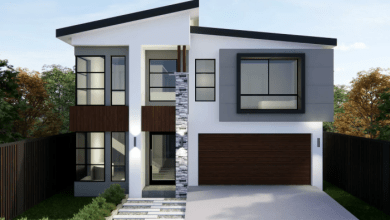
As we age, maintaining independence and comfort at home becomes increasingly important. For seniors, everyday tasks that were once simple can become challenging, and the risk of accidents rises. Making your home senior-friendly isn’t just about convenience—it’s about safety, dignity, and peace of mind. With thoughtful planning and a few key modifications, you can create a space that supports aging in place while keeping it comfortable and welcoming.
1. Prioritize Safety First
Safety is the foundation of a senior-friendly home. Falls are one of the most common causes of injury among older adults, so eliminating hazards is critical. Start by removing loose rugs or securing them with non-slip backing to prevent tripping. Ensure walkways are clear of clutter, cords, and furniture that might obstruct movement.
Lighting is another essential safety feature. Well-lit hallways, staircases, and entryways reduce the risk of falls. Consider installing motion-sensor lights or nightlights in bedrooms, bathrooms, and corridors, so seniors can navigate their home safely even in the dark.
Handrails and grab bars can make a significant difference. Install sturdy handrails on both sides of stairs and grab bars near toilets, showers, and tubs. These simple additions provide stability and confidence, especially for those with limited mobility.
2. Make Bathrooms More Accessible
Bathrooms often pose the greatest safety challenges. Slippery floors, high tubs, and tight spaces can make bathing and toileting difficult. Start by adding non-slip mats both inside and outside the shower or bathtub. A shower chair or bench allows seniors to sit comfortably while bathing, reducing fatigue and risk of falls.
Walk-in tubs or low-threshold showers can be a game-changer, eliminating the need to step over high edges. Handheld showerheads also provide flexibility and ease of use. Raised toilet seats with armrests can make sitting and standing easier, preserving independence.
3. Rethink the Kitchen
Kitchens should be functional and safe for seniors who may have limited mobility or reach. Organize frequently used items within easy reach to avoid excessive bending or stretching. Pull-out shelves, lazy Susans, and drawer organizers can improve accessibility and reduce strain.
Appliances with easy-to-read controls and safety features are ideal. For example, stoves with automatic shut-off or ovens with front-mounted controls can prevent accidents. Non-slip mats near the sink and cooking areas provide added stability. Adequate lighting over countertops and workspaces is also essential for both safety and efficiency.
4. Create Comfortable Living Spaces
Comfort matters just as much as safety in a senior-friendly home. Choose furniture that is supportive and easy to sit in and rise from, with chairs and sofas at a comfortable height. Steer clear of sharp edges, and add slipcovers or cushions for extra coziness. Open layouts and wider pathways make it easier for seniors to navigate, particularly for those using walkers or wheelchairs.
Keeping spaces clutter-free and minimizing excess furniture not only enhances safety but also creates a more inviting, relaxing atmosphere. For multi-level homes, affordable home elevators in Reno, NV can provide a convenient and safe way for seniors to move between floors without strain.
5. Technology Can Help
Smart home technology offers incredible opportunities to enhance both safety and convenience. Motion sensors, smart locks, and doorbell cameras can provide security without adding stress. Voice-activated assistants allow seniors to control lights, appliances, and even call for help hands-free.
Medical alert systems, wearable devices, or automated medication reminders can also support independent living. Technology doesn’t have to be complicated—simple, user-friendly devices can make a big difference in daily life.
6. Plan for the Future
A senior-friendly home should be adaptable. As mobility or health changes, consider modifications that accommodate evolving needs. Installing ramps, widening doorways, or adding stairlifts may not be necessary immediately but can be valuable long-term investments. Planning ahead ensures that seniors can continue to live comfortably and independently for years to come.
In Conclusion
Making a home safe and comfortable for seniors is a proactive step toward preserving independence, dignity, and quality of life. By focusing on safety, accessibility, comfort, and technology, you can create a space that meets both current and future needs. From simple adjustments like grab bars and better lighting to more significant renovations such as walk-in showers and widened doorways, every change contributes to a secure and welcoming environment.
A senior-friendly home isn’t just about avoiding accidents—it’s about creating a space where older adults can thrive, enjoy daily routines, and feel at home. With careful planning and thoughtful design, you can ensure that your living space remains a sanctuary of safety, comfort, and independence for years to come.




